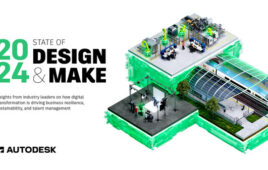Deeper than Mount Everest is tall, with no light, temperatures barely above freezing, and water pressure at eight tons per square inch—could anything live this deep in the sea? The DEEPSEA CHALLENGE expedition, a joint scientific project with National Geographic and Rolex, was designed to help answer questions in biology and geology, drawing worldwide attention.

Further enhanced by Ben Orchard, the PAC’s performance provided the most advanced submersible with a control system that performed above expectations. The data being processed and released through Opto 22’s SNAP PAC System provided a stable control platform for the pilot to fly the submersible, achieving a historical single piloted dive to 10900 meters.
Photo by Mark Thiessen/National Geographic
Moviemaker and explorer James Cameron’s March 26, 2012, solo dive to the bottom of the Mariana Trench was to conduct deep-ocean research and exploration. In 1960, Swiss explorer Jacques Piccard and U.S. Navy Lt. Don Walsh descended in the bathyscaph Trieste, staying on the bottom for a mere 20 minutes. However, this is the first solo exploration and only the second in history. The solo descent of almost 7 miles, to the “Challenger Deep,” the deepest point in the world’s oceans, was successful after an absence of more than fifty years. Cameron reached the sea floor in the DEEPSEA CHALLENGER, a technologically advanced deep-sea submersible. Equipped with multiple cameras, including 3D video cameras, a tower of LED lights, robotic claws and other apparatus to collect samples of rocks and sea creatures, the unique DEEPSEA CHALLENGER submersible holds just one human being for the descent to 6.8 miles below sea level.
A computer-based control system from U.S. manufacturer Opto22 sits at the heart of the submersible, controlling and monitoring more than 180 onboard systems such as sensors, batteries, thrusters, life support, and lighting. The control panel, located inside the pilot’s sphere, is only 43-in. in diameter. Based on a SNAP PAC controller, the engineering of the sub included its shrinking syntactic foam beam, and creative safety backups to the sub’s extensive control system.

A computer-based control system from U.S. manufacturer Opto22 sits at the heart of the submersible, controlling and monitoring more than 180 onboard systems such as sensors, batteries, thrusters, life support, and lighting.
Image courtesy of Acheron Project Pty Ltd.
The differences from the previous dive to the Challenger Deep are notable. In 1960, Piccard and Walsh’s descent took almost five hours to reach the sea floor, and over three hours to return. Sediment stirred up by the bathyscaph obscured the view through its small porthole and photographs of the sea floor outside weren’t possible.
Half a century after that first dive, DEEPSEA CHALLENGER takes advantage of advances in materials science, battery technology, and electrical and computer systems to create a mobile “science platform” that can descend to the sea floor in two hours, spend hours exploring, and then return to the surface in just over an hour.

Opto 22 manufactures controllers, I/O, solid-state relays, and software products that link electrical, mechanical, and electronic devices to networks and computers.
Cameron’s record-setting dive was backed by a team of engineers, scientists, educators, and journalists, including an on-site technical liaison from Opto22, and Application Engineer Benjamin Orchard, who worked with the submersible builder to integrate the Opto22 control system into the sub. In addition, a team of programmers and electrical engineers at Opto22, helped with custom programming, system design, and troubleshooting.
Opto22
www.opto22.com
Filed Under: I/O modules, CONNECTIVITY • fieldbuses • networks, ENGINEERING SOFTWARE, PLCs + PACs





Tell Us What You Think!